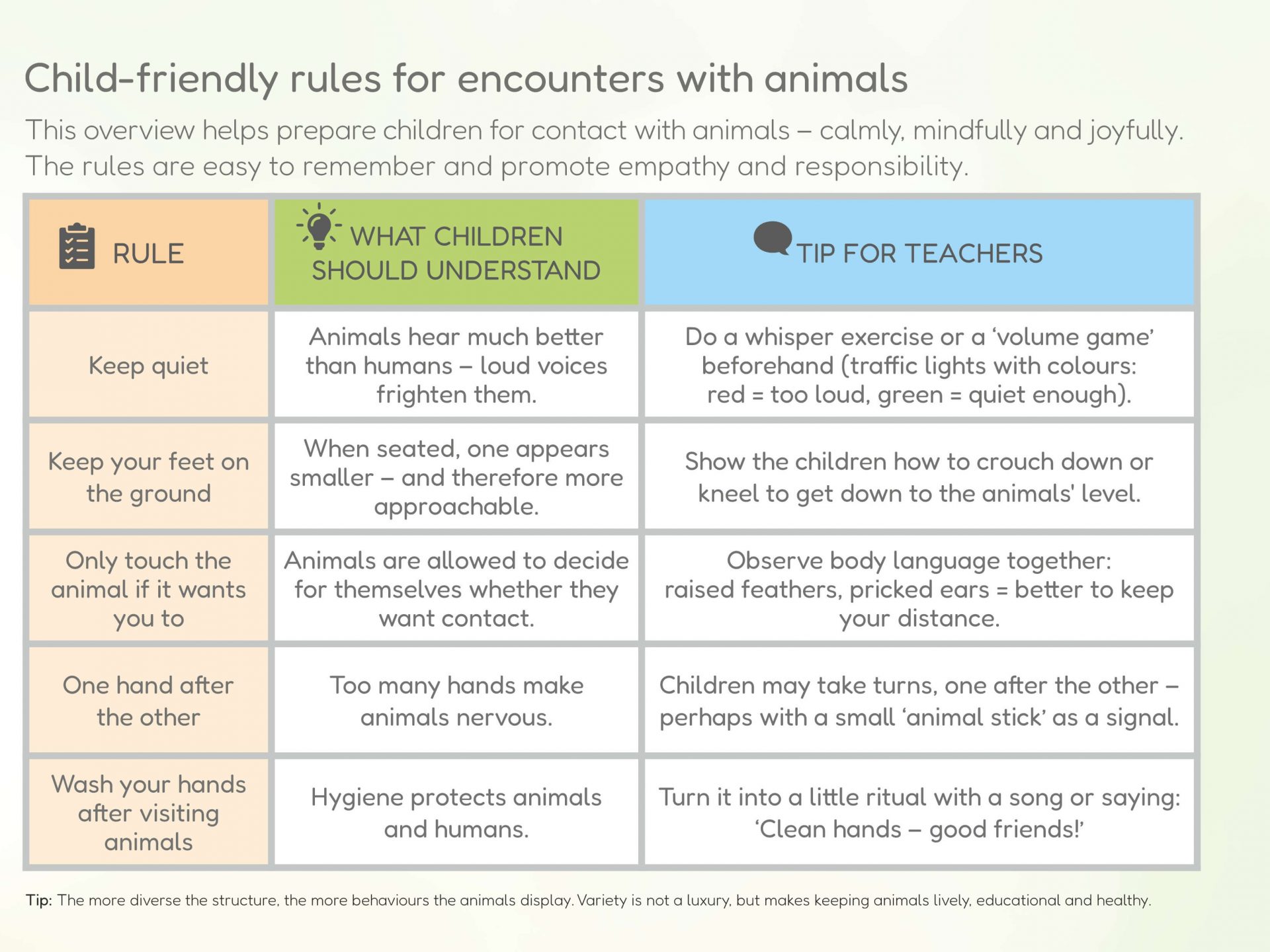
Rules for Children – Ensuring Relaxed Animal Visits
There is great excitement, as a rabbit is visiting the daycare center today! Upon entering, shouts such as “May I hold it?” or “I want to go first!” can already be heard. However, as soon as the animal settles on the blanket, silence falls. The children, who were just loud, are now whispering. They slowly lean forward, observe, and breathe quietly. An animal can change the atmosphere – but only if it feels secure.
Calm Instead of Commotion – the Animal as a Guest
Whether rabbits, guinea pigs, or school dogs: animals bring life into group rooms.
However, they also require safe spaces.
For children, it is often a new experience that the animal, not they, is the focus.
Important for Educators:
- An animal visit is not a performance. It is an invitation to become quiet and observe.
- The animal may return to its box, aviary, or transport bag at any time – without discussion.
- Conversations about “animal language” help children understand why retreat is normal and necessary.
5 Child-Friendly Rules for Animal Encounters 🧩
This overview helps prepare children for animal contact – calmly, mindfully, and with joy.
The rules are easy to remember and promote empathy and responsibility.

A Small Shift in Perspective
Children love animals, but they also need to learn that love sometimes means keeping a distance.
Many educators report that animal projects not only impart knowledge but also foster self-regulation. Children who are usually restless become completely quiet when observing.
A child once said:
“I don’t want it to be scared. Then I’d rather be quiet.”
This sentence shows: Empathy begins where we recognize our impact.
For Daycare and School Life
- Rituals help: “Before the animal visit, it gets quiet – the animal hears with its ears, not with its eyes.”
- Prepare animal visits regularly: show small photos, discuss behavior.
- Let children formulate their own “animal rules” – draw or write on cards.
💡 Extra Tip:
Create an “animal visit book” in the facility, where children can record drawings, observations, and favorite moments. This keeps the experience alive and turns it into a shared memory.
Conclusion
An animal visit is not an event, but an opportunity to learn about consideration, responsibility, and compassion.
When children experience that silence creates safety, an understanding develops that extends far beyond this day. 💚
Read More
Retreats are the heart of a secure home. They offer protection, tranquility, and orientation. Animals that are allowed to retreat exhibit more natural behavior and become tamer – entirely without pressure. Children thus learn that trust grows in silence.